Microsoft BUILD: Windows 8, A Pre-Beta Preview
by Brian Klug & Ryan Smith on September 13, 2011 12:05 PM EST- Posted in
- BUILD
- Windows
- Microsoft
- Windows 8
- Trade Shows
The Technical Side Of Windows 8: Cont
Moving up the chain, Microsoft has added a number of base class drivers for hardware in Windows 8. This includes not only USB 3, but also class drivers for mobile broadband radios, sensors, and even printers. For printers this means Windows 8 can print to roughly 70% of all Windows 7 certified printers without an additional driver, which is nearly a necessity for Windows 8 as an ARM tablet OS, as drivers may not be available and tracking down a driver flies in the face of the modern pre-configured OS model for tablets.
For mobile broadband things are a bit more interesting. With this addition mobile broadband is being promoted to a first class connectivity option, right up there with Wi-Fi and Ethernet. Mobile broadband hardware can then be integrated into a laptop or a tablet or added via a dongle without requiring a driver or a complex dialer/manager application. Managers will still exist in a lesser form as a Metro application; Microsoft included one such example with the tablet we tested, which had a working AT&T 3G modem and its associated management application.

Windows 8 will also be aware of the limitations of mobile broadband connections, with an emphasis in usage caps. Given appropriate information by the ISP Windows 8 knows to halt background download processes (e.g. Windows Update, weather updates, RSS) to keep them from consuming valuable bits, and to notify the user if the device is approaching the cap and would be subject to overages. Along these lines Windows 8 also knows to switch to another source (i.e. Wi-Fi) when it’s available to avoid using up those metered bits.
We’ve mentioned permissions before when talking about the Windows Store, but it seems prudent to mention it again. For Metro applications Windows 8 will have a more fine grained permissions model than existing low/user/admin level privileges, by implementing Android style permissions. Metro applications will only be able to access the resources and data they were approved for, reducing the ability for a compromised application to be used as a launch pad for further attacks.
Our next stop on our look at the technical details for Windows 8 is the boot process. Microsoft put up an interesting blog last week discussing Windows 8’s new boot process, which was reiterated here – Windows 8 boots up much faster than Windows 7 thanks to the fact that only user processes are shut down, meanwhile the kernel is hibernated rather than shut down, shaving off a lot of time that would be needed to reload the kernel from a fresh boot. Realistically you need a motherboard with a very fast POSTing sequence, which means this is best paired with UEFI-based OEM boards. Certainly self-built systems will improve too, but we would not expect by as much.
The other new fact discussed about the Windows 8 boot process was that Microsoft is making another push to secure it through chain of trust hardware (presumably a TPM module), this time under the name Secure Boot. Utilizing the chain when available, if Windows 8 detects that a boot component has been modified it will fail the boot and kick over to the Windows Recovery Environment to restore the OS to a fixed state. With ARM devices (and even most PC tablets) the use of this feature will be a given, but obviously TPM hardware is much rarer on laptops and desktops.
Windows’ anti-malware features will also be making an appearance in the boot process. Windows Defender (which now includes Microsoft Security Essentials) now loads immediately after the critical boot components are loaded, allowing Defender to check everything that wasn’t protected by the Secure Boot process above.
Finally when it comes to booting, the last bastion of the CLI in the Windows boot process is gone. The F8 menu has been replaced with a GUI based Windows Recovery Environment. The WRE goes hand in hand with two other recovery features: Refresh and Reset.
Reset is a Windows-based implementation of OEM OS recovery partitions: when Reset is triggered, the entire system is overwritten by the restoration copy. As for Refresh it’s a bit more nebulous; it’s apparently a new implementation of Windows’ existing Last Known Good Configuration, allowing users to revert anything crapware may have done. But we don’t have the full details on its underpinnings at this time.

Last, but certainly not least we have the Task Manager. Other than a couple of minor changes with Windows Vista the Task Manager has remained nearly unchanged for years, so of course Microsoft has gone ahead and overhauled it. By default the new Task Manager is extremely simplified and only lists running user applications, thereby ensuring users only close applications and not background processes and such by mistake.
In detailed most the Task Manager takes on a more traditional appearance, giving you greater details about all of the running processes (including breaking them down by application or background process), but also a number of new performance metrics (largely taken from Windows 7’s performance monitor), and even an over-time breakdown of the resource usage of all of the system’s installed Metro applications. Interestingly the Task Manager itself is not strictly Metro, but rather a desktop application that doesn’t require the desktop environment to be loaded.


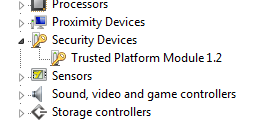
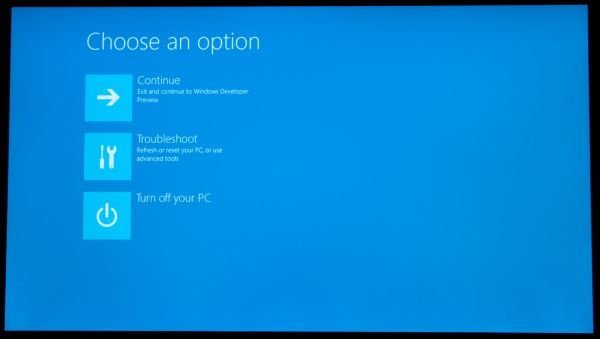
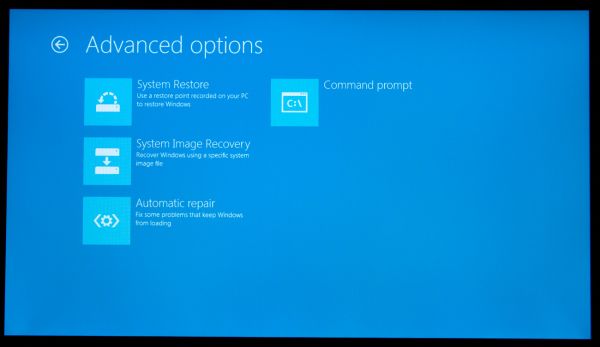
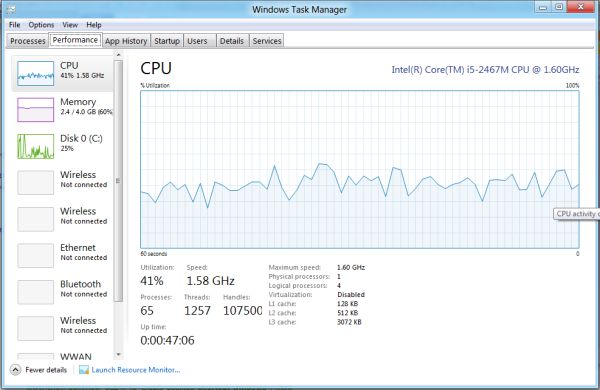
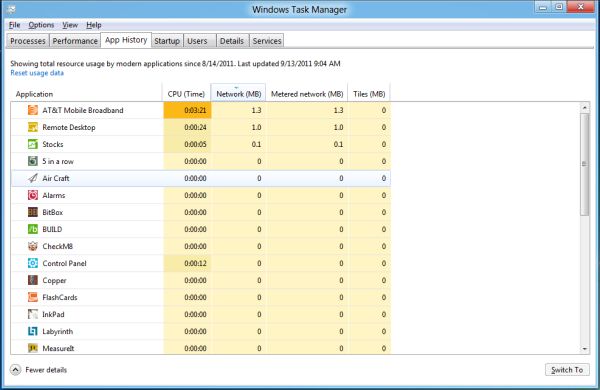








235 Comments
View All Comments
rs2 - Tuesday, September 13, 2011 - link
"On a final note about system requirements, while Microsoft isn’t talking about specific versions of Windows 8 at this time, they’ve made it clear that x86 will live on for at least one more generation in order to fulfill their desire to have Windows 8 run on everything Windows 7 ran on."Hang on a second. Did you seriously just imply that Windows (or any other major OS) is going to drop support for x86? Or that there was *ever* any doubt that Windows 8 would not support x86? I think you've gone at least a little bit crazy.
x86 is here to stay, for at least the forseeable future (which I think gets us to around Windows 12). No software company is going to be willing to cede the entire x86 market to their competitors or ditch x86 as a platform just because phones and tablets tend to run ARM processors. Doing either of those things makes absolutely no sense at all.
Rand - Tuesday, September 13, 2011 - link
I think he means X86-32, MS hasn't made any statements implying that X86 uarch as a whole is going anywhere.Ryan Smith - Wednesday, September 14, 2011 - link
Correct. x86 as opposed to x64 (since that's the nomenclature MS uses). Windows 8 will have 32bit x86 editions; MS won't transition to solely 64bit x64 for another generation.rs2 - Wednesday, September 14, 2011 - link
Then the nomenclature used by MS is incorrect. x86-64 (or apparently, x64 is MS-speak) is fully x86 compatible, even down to support for 16-bit "real mode". As such x86 will always live on, even if Windows does eventually require an x86-64 based processor.loll123 - Wednesday, September 14, 2011 - link
Yes, but the issue is whether Windows will support processors that only have the x86-32 part of the instruction set.Lugaidster - Wednesday, September 14, 2011 - link
Do you need to submit an app to the store in order to install a metro application or are metro applications still downloadable like regular apps?Ryan Smith - Wednesday, September 14, 2011 - link
I can't completely answer this but I will do as much as I can.ARM: The Store is the only way to get applications
x86: Applications can still be installed normally
With that said I can't completely answer where Metro fits in, because that specific question was never asked or a suitable answer given. Certainly Metro applications using MS's DRM scheme will need to go through the Store to make the licensing click. But Metro apps without DRM...?
Lugaidster - Wednesday, September 14, 2011 - link
I was thinking of something like business apps or apps that would never be approved because of content (the major reason jailbreaking exist on an iPad is because of the latter). It would be great if you could sideload metro apps...Stas - Wednesday, September 14, 2011 - link
When I used Win98, I was stoked when I first heard about Windows XP. Absolutely loved it, after I started using it.Windows Vista also made me anxious about the wait. Unfortunately, I wasn't as pleased; however, still satisfied.
Windows 7 is by far the best OS I ever used. That is exactly how I thought it would turn out when I decided to download the RC version.
Today though, I'm looking at this simplified experience for ADD kids, and I'm rather disappointed. Huge buttons, lack of menus and options, and I bet they killed off kb shortcuts :/ I would expect this from Apple; but MS... son, I'm disappoint *face palm*
I will still try it, whenever RC is available but I'm not holding my breath for something useful, efficient, and flexible. I'm sure it will be a great tablet OS though. Now, just to figure out why in the world I would need a tablet with powerful desktop, and a high-end smart phone...
loll123 - Wednesday, September 14, 2011 - link
I have ADD and I started my computing career on MS-DOS when I was 3 years old. So don't go around and make comments like that please.